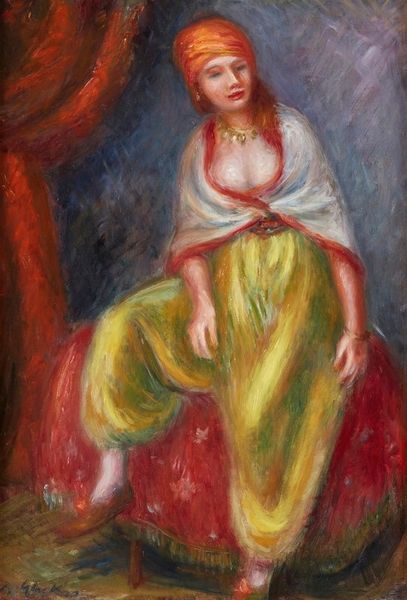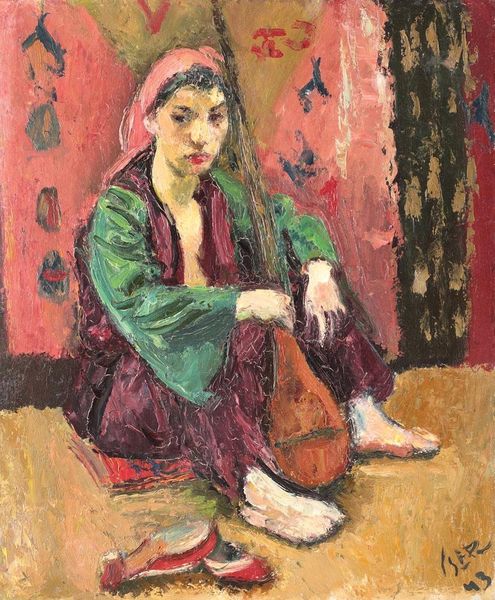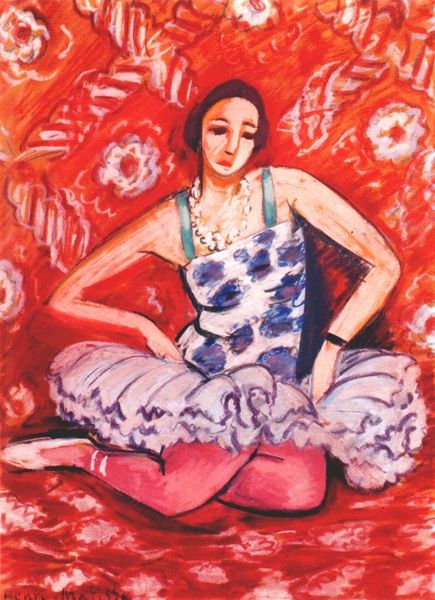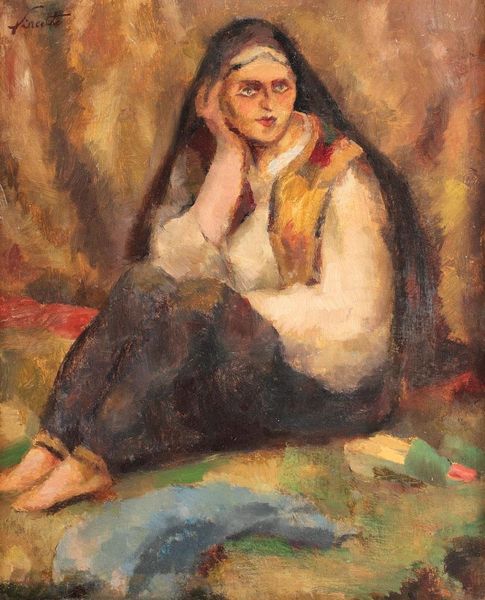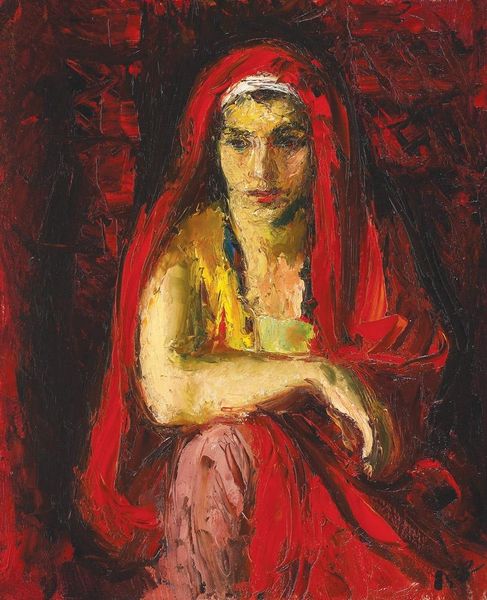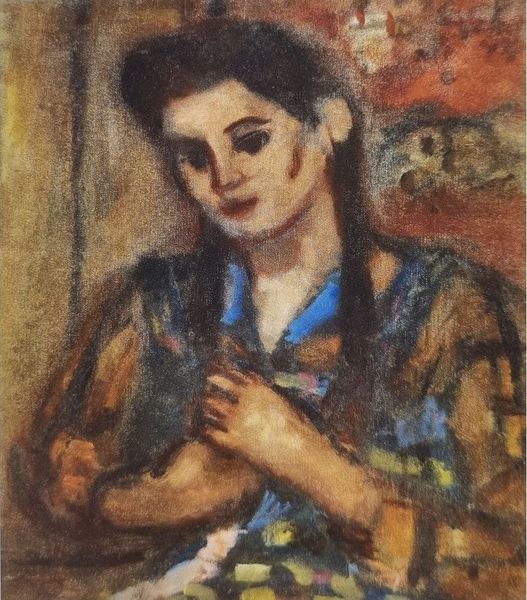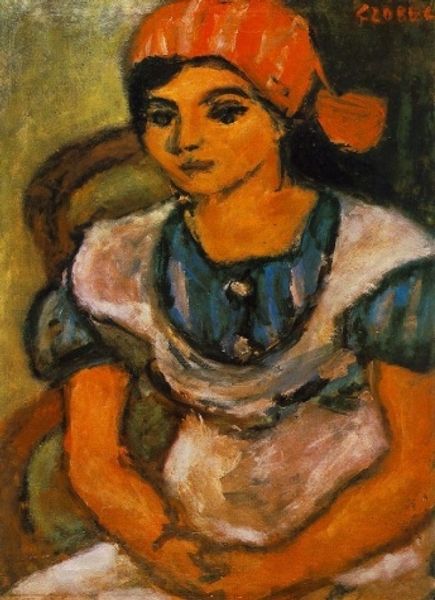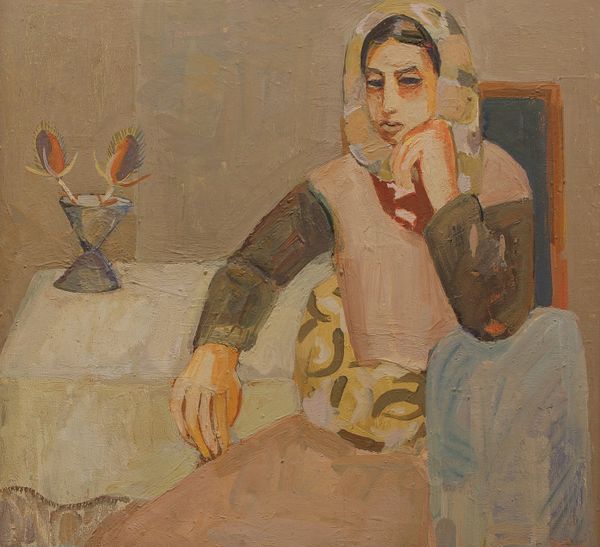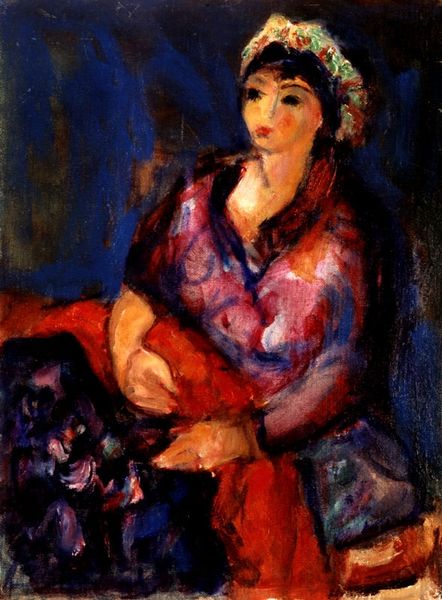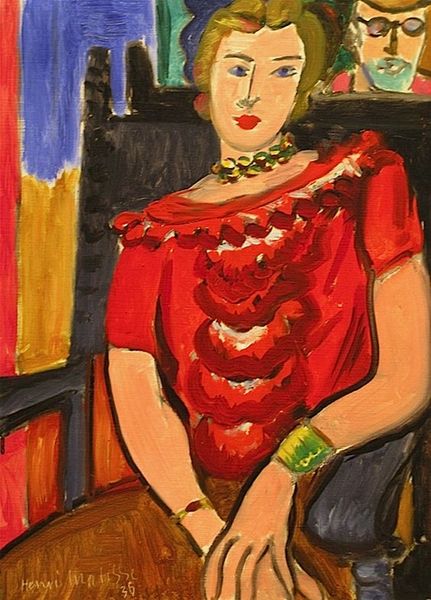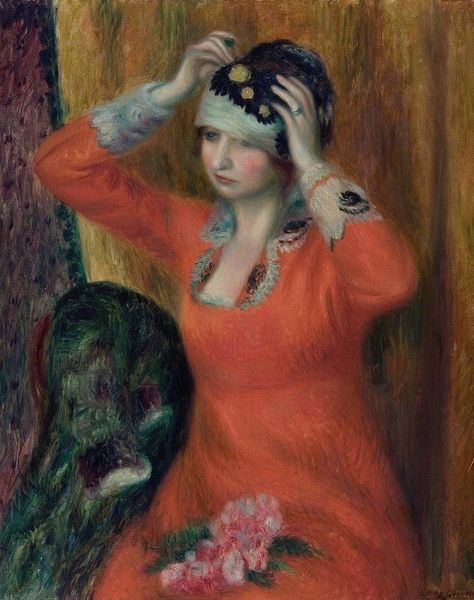
Copyright: Public Domain: Artvee
Curator: Here we have William Glackens’s "Armenian Girl," painted in 1916. The work, rendered in oil, exemplifies Glackens’s engagement with Impressionism through the lens of his own distinct style. Editor: The overall impression is one of quiet intensity. The subject’s gaze is direct, almost challenging, and the warm palette contrasted against the cool tones in the lower part of the piece creates an engaging visual harmony. Curator: Indeed. Let's consider the context in which this work was produced. In 1915, Glackens travelled through Europe, and one might wonder what access he might have had to textiles and clothing produced by Armenian communities that fled escalating massacres by Turkish troops as he planned the artwork. This image could offer us a point of view of those tragic events and material. Editor: I see that possibility, certainly. I am especially struck by the contrast in textures—the heavy drapery behind her versus the smoothness of her skin and the lightness of her garments. This creates a visual richness. Also, look closely at the brushwork, particularly in the background—it’s almost abstract. Curator: And it’s through that very brushwork that Glackens reveals his artistic influences but also his ability to bring to bare particular attention and intention in terms of the materiality and social issues surrounding him at the time, especially for displaced people. The use of oil paint in such a tactile manner transforms what could be a simple portrait into something with profound historical reverberations and a unique image production story. Editor: I agree, looking at Glackens' color choices and how light is handled—the way her face is illuminated creates an intriguing focal point that draws you in and demands introspection. Curator: It is the painting’s social fabric and texture, which, although not directly representative of conflict, brings our attention to a poignant moment in the past. This portrait offers us the opportunity to analyze not just a moment in art history, but also in our global memory of historical labor, creation, and making practices. Editor: Well, however you consider it, it’s a fascinating work from Glackens that definitely gives us plenty to look at and think about. Curator: Indeed. It reveals much about both the artist and the period during which it was created.
Comments
No comments
Be the first to comment and join the conversation on the ultimate creative platform.
